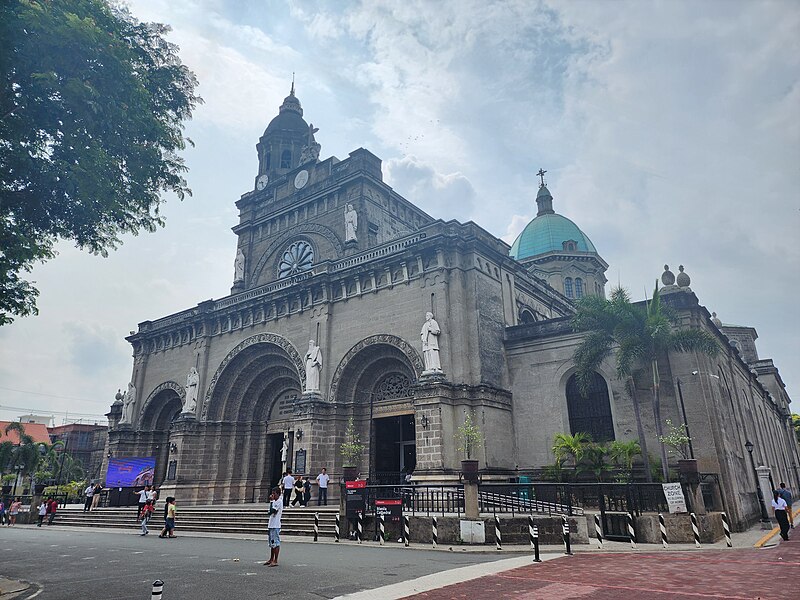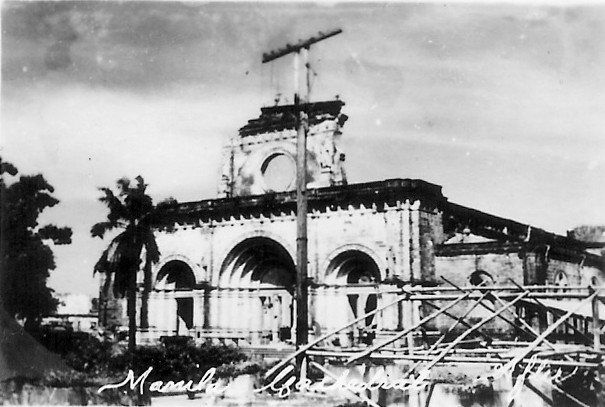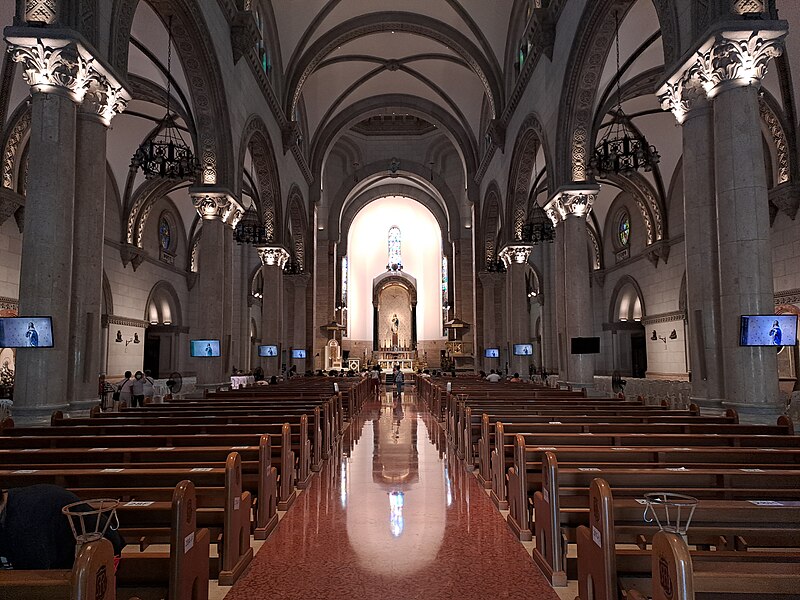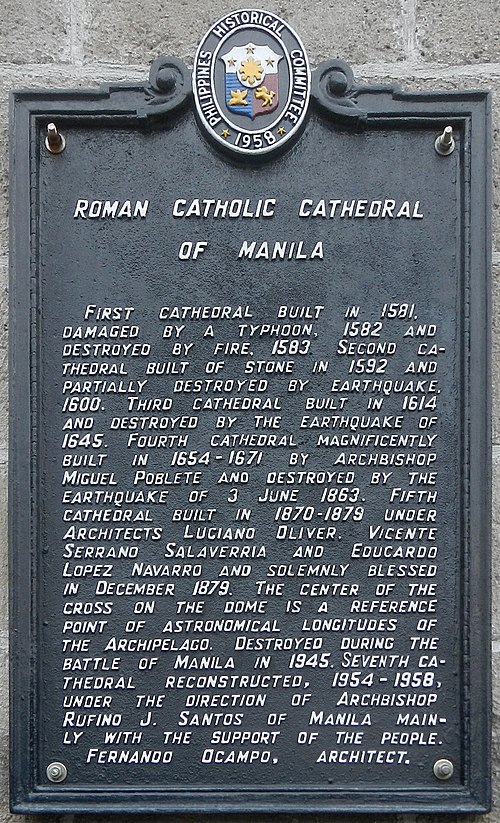Manila Cathedral – A Testament of Faith and Resilience

Nestled within the storied walls of Intramuros, the Manila Cathedral stands as a grand symbol of the Philippines deep Catholic roots, turbulent history, and unwavering spirit. Officially known as the Minor Basilica and Metropolitan Cathedral of the Immaculate Conception, this iconic structure has witnessed centuries of transformation, survival, and rebirth, much like the city it calls home.

The fifth cathedral in 1792, by Fernando Brambila – Source: https://commons.wikimedia.org/wiki/File:Manila_Cathedral_(1792)_by_Brambila.jpg
A Walk Through History
The Manila Cathedral’s origins date back to 1571, when it was first established as a simple parish church made of nipa and bamboo. It was the seat of the Archdiocese of Manila and dedicated to the Immaculate Conception, the principal patroness of the country. Over the centuries, it has been rebuilt multiple times due to fires, typhoons, and devastating earthquakes.

The newly rebuilt Manila Cathedral in 1880 before the earthquake of July 20, 1880, which knocked down the over-a-century old bell tower. – Source: https://commons.wikimedia.org/wiki/File:Manila_Cathedral_before_the_1880_earthquake.jpg
Perhaps most notably, the cathedral was almost completely destroyed during World War II in the 1945 Battle of Manila, when the city endured one of the most intense urban battles of the war. Rising from the rubble, it was rebuilt once again and was finally completed in 1958 under the guidance of architect Fernando Ocampo, preserving its Romanesque-Byzantine style that we admire today.

Manila Cathedral after 1945 Japanese bombing attack in W.W. II – Creative Commons | Author: Mepurina – Source: https://commons.wikimedia.org/wiki/File:Manila_Cathedral_after.jpg
Architecture and Design
Walking into the Manila Cathedral is a breathtaking experience. From its grand facade to its intricate stained-glass windows and vaulted ceilings, every corner tells a story. The current structure features:
– A massive central dome symbolizing heaven, bringing natural light into the cathedral’s interior.
– Beautifully carved bronze doors, depicting scenes from the life of the Virgin Mary.
– Stunning mosaics and frescoes, along with several chapels honoring different saints.
– A revered pipe organ, considered one of the largest in Southeast Asia.
Outside, the cathedral’s neo-Romanesque façade blends classical elegance with a sense of spiritual solemnity. It’s no wonder it has become a favorite backdrop for weddings, pilgrimages, and cultural tours.

Central nave of the Manila Cathedral, November 2022 – Creative Commons | Author: LMP 2001 – Source: https://commons.wikimedia.org/wiki/File:Manila_Cathedral_central_nave_2022-11-27.jpg
More Than Just a Building
Beyond its physical beauty, the Manila Cathedral serves as a spiritual and cultural cornerstone. It has hosted papal visits from Pope Paul VI, Pope John Paul II, and most recently Pope Francis in 2015. It’s also a focal point for major religious celebrations in the Philippines, particularly during Holy Week and Christmas.
For many Filipinos, especially those with deep ties to Manila, the cathedral is not just a landmark—it’s a living witness to their faith, heritage, and resilience.
Visiting the Manila Cathedral
If you’re planning to explore Intramuros, the Manila Cathedral is a must-see. Here are a few quick tips:
Entrance Fee – Free, but donations are welcome.
Mass Schedule – Masses are held daily; check their official page or social media for updated times.
Best Time to Visit – Early morning or late afternoon, when the sunlight hits the facade beautifully and the interior is quiet and serene.
Nearby Spots – Don’t miss Fort Santiago, San Agustin Church, and Casa Manila, all within walking distance.

Church PHC historical marker installed in 1958 – Creative Commons | Author: Photo: Judgefloro; perspective correction: Eugene Alvin Villar – Source: https://commons.wikimedia.org/wiki/File:Roman_Catholic_Cathedral_of_Manila_historical_marker_(corrected).jpg
The Manila Cathedral
In a city that never stops evolving, the Manila Cathedral remains a timeless reminder of faith, endurance, and beauty. Whether you’re a history buff, an architecture enthusiast, a pilgrim, or simply a curious traveler, this iconic cathedral offers a powerful and peaceful moment in the middle of the busy city.
References:
Wikipedia










